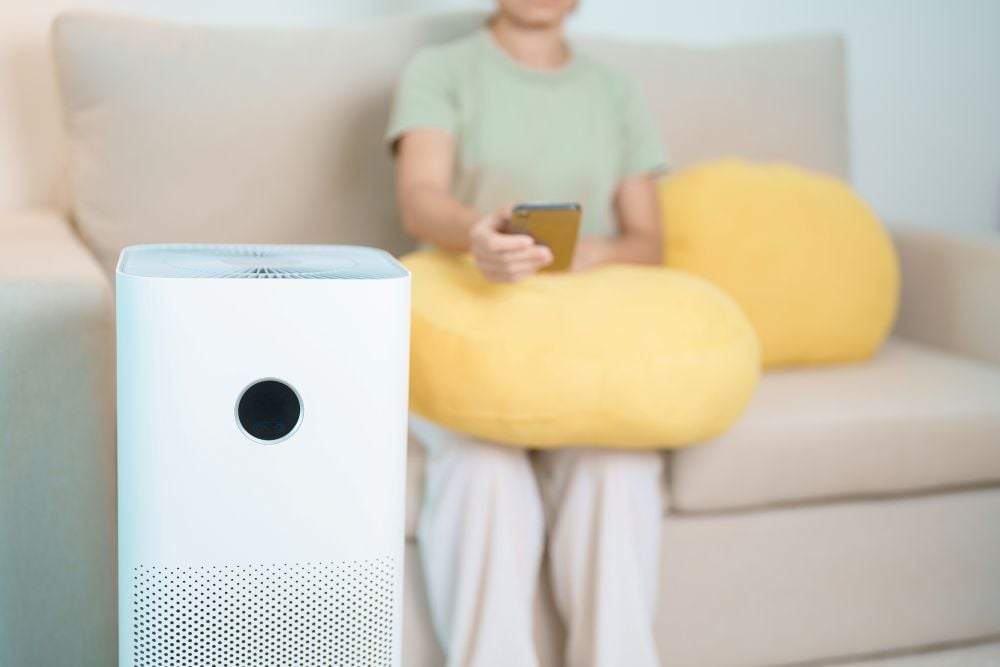When summer temperatures soar, staying comfortable indoors becomes a top priority. Two popular cooling options dominate the market: portable air conditioners and ceiling fans.
Each offers distinct advantages and limitations that can significantly impact your comfort, energy bills, and overall satisfaction during the hottest months of the year.
Understanding How They Work
Portable air conditioners function by removing heat and humidity from indoor air, then expelling that heat outside through an exhaust hose. They use refrigerant and compressor technology to actively lower the temperature of your space, creating genuinely cooler air that circulates throughout the room.
Ceiling fans, on the other hand, work through air circulation rather than temperature reduction. They create a wind-chill effect that makes you feel cooler by evaporating moisture from your skin. The ambient temperature remains unchanged, but the moving air provides relief by improving your body’s natural cooling mechanism.
Cooling Effectiveness
The fundamental difference in cooling power is perhaps the most significant factor to consider. Portable air conditioners can lower room temperature by fifteen to twenty degrees, providing authentic relief from oppressive heat. This makes them essential for extreme weather conditions when temperatures exceed ninety-five degrees Fahrenheit.
Ceiling fans cannot actually reduce room temperature. They merely make you feel cooler through air movement, which provides relief of approximately four to six degrees in perceived temperature. In extremely hot conditions, especially when humidity is high, ceiling fans alone may prove insufficient for maintaining comfortable conditions indoors.
Energy Consumption and Operating Costs
According Hunter Fan, a top company that designs, manufactures, and sells fans, ceiling fans are remarkably economical, typically consuming between fifteen and ninety watts of electricity depending on their size and speed settings.
Running a ceiling fan continuously throughout an entire summer month might cost only a few dollars on your electricity bill.
Portable air conditioners demand significantly more power, usually consuming between eight hundred and fifteen hundred watts during operation. This translates to substantially higher electricity costs, potentially adding fifty to one hundred fifty dollars monthly to your energy expenses. The exact amount depends on usage patterns, unit efficiency ratings, and local electricity rates.
Installation and Portability Considerations
Despite their name, portable air conditioners require some setup effort. You must position them near a window to vent the exhaust hose outside, and most units need periodic drainage of collected condensation. While you can move them between rooms, the process involves disconnecting and reconnecting the exhaust system each time.
Ceiling fans require professional installation involving electrical wiring and secure mounting to ceiling joists. Once installed, they remain permanently fixed in that location. However, this permanence eliminates any need for seasonal setup or breakdown, and they integrate seamlessly into your home’s design and electrical system.
Space Requirements and Aesthetics
Portable air conditioners occupy valuable floor space, often measuring two feet tall and one foot square in footprint. The exhaust hose creates visual clutter and must remain connected to a window, limiting furniture placement and room arrangement. Many people find these units unattractive and somewhat obtrusive in their living spaces.
Ceiling fans mount overhead, keeping floor space completely free for furniture and movement. Modern ceiling fans come in countless styles, finishes, and blade designs that can enhance your interior decor. Many homeowners view quality ceiling fans as attractive architectural features that add value to their homes rather than eyesores.
Humidity Control Capabilities
One significant advantage of portable air conditioners is their ability to remove moisture from indoor air. High humidity makes hot weather feel even more oppressive and uncomfortable. Portable AC units extract several pints of water daily from the air, creating a drier, more comfortable environment that feels cooler than the thermometer reading suggests.
Ceiling fans provide no humidity control whatsoever. In fact, in extremely humid conditions, ceiling fans may feel less effective since the air being circulated is already saturated with moisture. This limitation makes ceiling fans less suitable as standalone cooling solutions in tropical or subtropical climates with persistent high humidity levels.
Noise Levels
Sound output varies considerably between models and brands. Portable air conditioners typically produce fifty to sixty decibels of noise from their compressors, fans, and refrigerant circulation. This constant mechanical hum can be disruptive during sleep, conversations, or quiet activities, though some people find the white noise soothing.
Ceiling fans generally operate much more quietly, especially quality models with direct-drive motors. At low speeds, many produce barely audible sound levels below thirty decibels. Even at higher speeds, the gentle whooshing of moving air is usually far less intrusive than the mechanical sounds generated by air conditioning equipment.
Health and Air Quality Factors
Portable air conditioners filter incoming air and can improve indoor air quality by removing dust, pollen, and other airborne particles. The dehumidification they provide also discourages mold growth and dust mite proliferation. However, if not properly maintained, the moist interior components can harbor bacteria and mold that circulate throughout your space.
Ceiling fans simply move existing air without filtering or treating it. They can help prevent stagnant air conditions and improve overall ventilation when used with open windows. During winter months, reversing the blade direction allows them to circulate warm air that rises to the ceiling, improving heating efficiency throughout the year.
Best Use Cases
Portable air conditioners excel in situations requiring genuine temperature reduction. They work best in small to medium-sized rooms where extreme heat makes comfort impossible otherwise. People living in rental properties, apartments without central air, or homes where installing window units is prohibited benefit most from portable AC technology.
Ceiling fans are ideal for supplementing existing cooling systems or providing adequate comfort in moderate climates. They work wonderfully in bedrooms, living areas, and covered outdoor spaces where gentle air circulation enhances comfort. Homes with energy efficiency priorities or those in temperate regions find ceiling fans perfectly sufficient throughout summer.
Making Your Decision
The choice between a portable air conditioner and a ceiling fan ultimately depends on your specific circumstances.
For those in milder climates or seeking to reduce energy consumption, ceiling fans offer comfortable, economical, and environmentally friendly cooling.
Many households find that combining both solutions provides optimal results: using ceiling fans as the primary cooling method while keeping a portable air conditioner available for the most oppressive heat waves.





